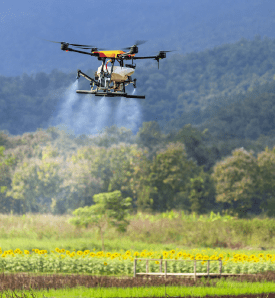Organic food has gained popularity in recent years, driven by the perception that it offers both superior nutrition and reduced exposure to toxic chemicals. But is there scientific evidence to support these claims? Let’s delve into the debate and see what the current research has to say about the overall health benefits of organic versus conventional produce.
Vitamin and Mineral Content
When it comes to vitamin and mineral content, studies indicate that there is little to no difference between organic and conventionally grown fruits and vegetables. This means that from a nutritional perspective, both types of produce provide similar benefits. So, if you’re solely looking for vitamins and minerals, the choice between organic and conventional might not matter all that much.
Antioxidant Content
Organic produce does have a noticeable advantage in terms ofantioxidant content. Antioxidants, such as polyphenols, are substantially higher in organic fruits and vegetables compared to conventionally farmed ones. For example, some studies have reported up to 60% higher levels of polyphenols in organic produce. These compounds have been associated with various health benefits, including reduced risks of cardiovascular disease, certain cancers, and chronic diseases. In fact, some research has even linked organic food consumption to a lower risk of type 2 diabetes, possibly due to increased antioxidant levels and reduced pesticide exposure.
It’s worth noting that organic farming practices, which use fewer chemical pesticides, encourage plants to produce more antioxidants as a defense mechanism against pests and diseases. This is a significant advantage of choosing organic food.

Pesticides
One of the primary reasons many people opt for organic food is to minimize exposure to pesticide residues. Research suggests that conventionally grown produce can contain up to four times higher pesticide residues than organically farmed crops. Pesticides have been associated with various health concerns, including an increased risk of diabetes, reduced neurological function, and non-Hodgkin lymphoma. Choosing organic produce can help reduce these potential health risks associated with pesticide exposure.
What about the cost?
Without doubt It can be morecostly to move to an entirelyorganic way of eating. So here’s some tips:
- Join a buying group where you can buy in bulk and benefit from the connection with like-minded people in your community.
- Use your local farmers markets, where seasonal produce will be more readily available.
- Use delivery services providing mixed boxes of seasonal produce. Share with a neighbour if it’s more than you need.
- Grow your own – it’s not too hard to grow veggies and herbs, and there’s nothing fresher!
- Always choose organic from ‘the dirty dozen’
Conventional farming typically uses a variety of pesticides to protect crops from pests, diseases, and weeds.
Including:
- Insecticides: chemicals designed to control and eliminate insect pests that can damage crops. Common insecticides include organophosphates, pyrethroids,neonicotinoids, and carbamates.
- Herbicides: used to control and kill unwanted weeds thatcompete with crops for nutrients and sunlight.Glyphosate (commonly known as Roundup) is one of themost widely used herbicides, but there are many other herbicides with different modes of action.
- Fungicides: applied to prevent or treat fungal infectionsin crops. Common fungicides include azoles, strobilurins, and dithiocarbamates.
- Rodenticides: used to control rodents like rats and mice, which can damage crops and stored food products.These substances are generally used around the farm rather than directly on crops.
- Nematicides: Nematicides are specifically designed to control nematodes, microscopic worms that can harm plant roots and reduce crop productivity.
In the end, the choice between organic and conventional food isn’t just about nutritional content. While organic food may not seem to significantly differ interms of vitamins and minerals, it does provide higher antioxidant levels and lower pesticide residues. Toxic chemicals like these have been associated with increased intestinal permeability or ‘leaky gut syndrome’, which is a very good reason for most of us to choose low-tox options where we can. Antioxidant-rich foods are known as heart-health protective and have healthy aging properties, so organic is likely worth the extra cost to invest in your health.
The Clean Fifteen and the Dirty Dozen
Clean Fifteen – considered lower
in pesticide residue
- Avocado
- Sweet corn
- Pineapple
- Onion
- Papaya
- Sweet peas (frozen)
- Eggplant
- Asparagus
- Cauliflower
- Cantaloupe
- Broccoli
- Mushrooms
- Cabbage
- Honeydew melon
- Kiwi fruit
Dirty (Bakers) Dozen- considered
higher in pesticide residue
- Strawberries
- Spinach
- Kale
- Nectarines
- Apples
- Grapes
- Peaches
- Cherries
- Pears
- Tomatoes
- Celery
- Potatoes
- Hot peppers
